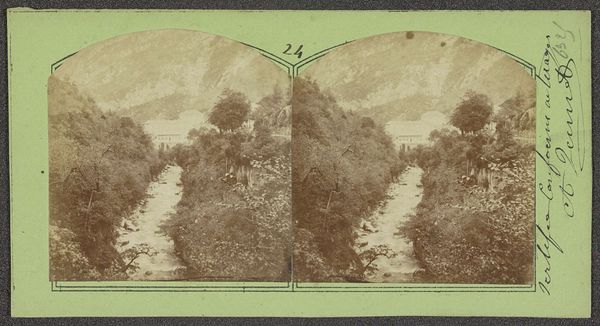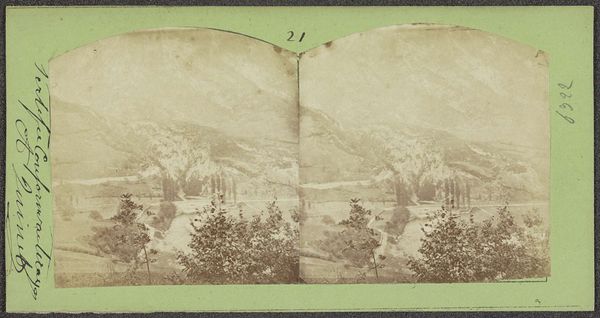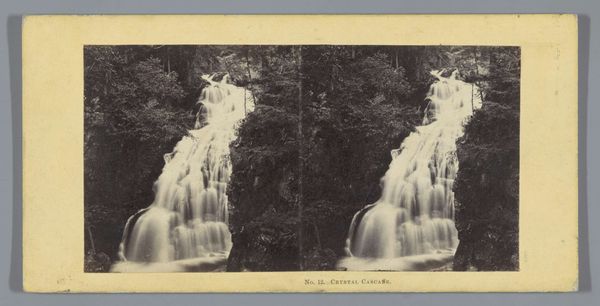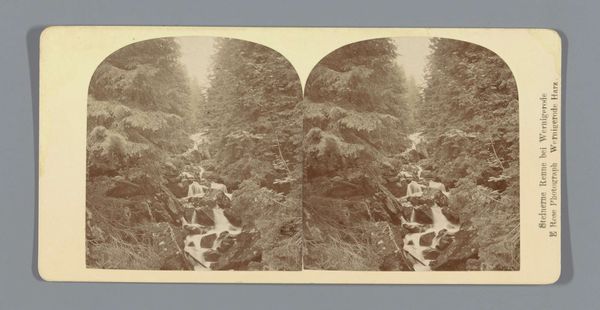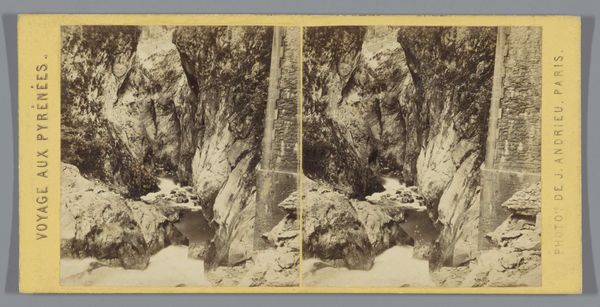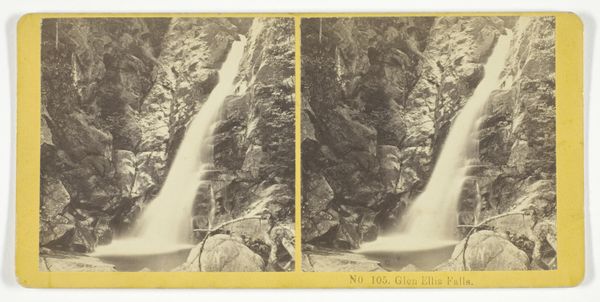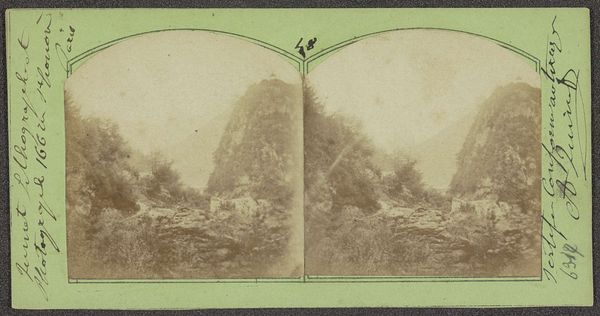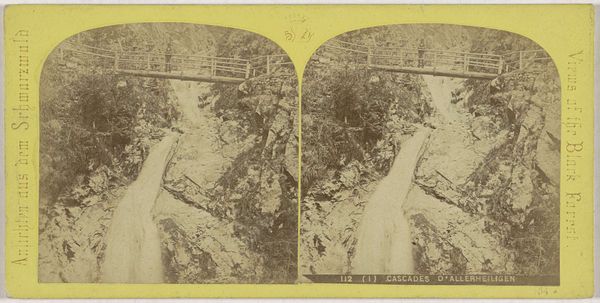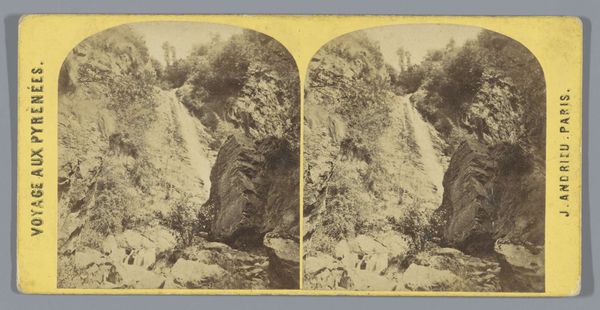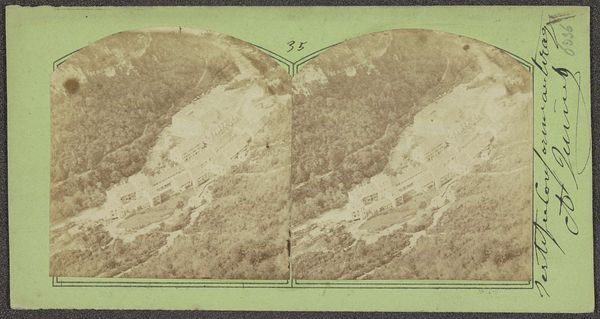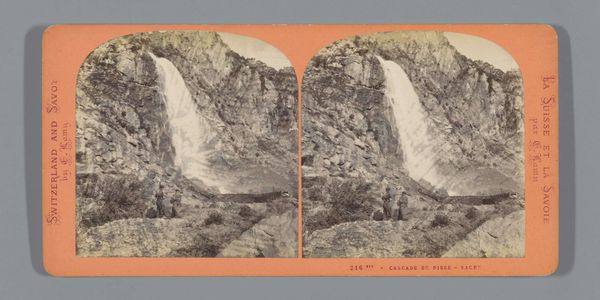
Berglandschap met bomen met daarin een gebouw, water mondt via de berg uit in een rivier c. 1860 - 1880
0:00
0:00
achillequinet
Rijksmuseum
Dimensions: height 87 mm, width 174 mm, height 75 mm, width 70 mm, height 74 mm, width 71 mm
Copyright: Rijks Museum: Open Domain
Achille Quinet captured this alpine landscape in a stereoscopic photograph, a medium that offers us a dual perspective, not unlike our own understanding of symbols through time. Note how the cascading water dominates the scene, flowing down from a modest building atop the mountain. Water, as a symbol, is ancient and universal. We find it in myths and religions across the globe—a life-giver, a purifier, and a force of constant change. Think of baptismal rites or ancient river gods, symbols of renewal. But the building, so small yet deliberately placed at the mountain's peak, is also significant. It stands as a testament to human presence amidst the vastness of nature, an enduring motif of civilization asserting itself against the sublime. Recall Caspar David Friedrich’s wanderers dwarfed by nature, contemplating their place in the world. This building, like those figures, represents the human soul yearning for connection, for understanding. Here, we see nature and culture interwoven. The mountain's water flows eternally, but the building, a human construct, stands as a point of meditation, a reminder of our own fleeting existence. It is a dialogue between what is timeless and what is transient.
Comments
No comments
Be the first to comment and join the conversation on the ultimate creative platform.
